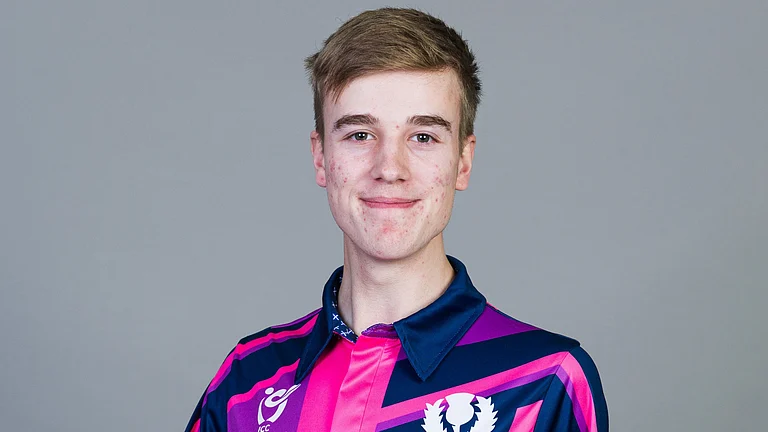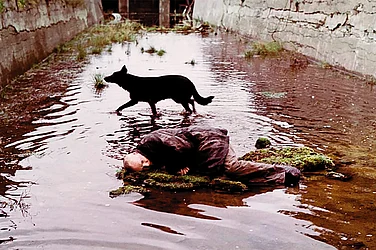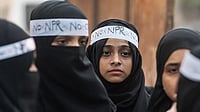For Kishor Sawant, the search for a location is the most fascinating aspect of creating a film. From the moment the script is handed over to him, the hunt for locations matching the idea of the writer is set in motion. Brimming with enthusiasm and armed with a sense of purpose, Sawant sets off in every direction to discover locales, where the film can be shot.
This, he believes, can make or mar a film.
Sawant began as a line producer, someone who kept track of the budget and the filming process. He is on the sets and in the producer’s office, dealing with the unexpected and helping find creative solutions. At the end of the shoot, he oversees the winding down of the production and hands it over to the post-production supervisor.

Mumbai became his favourite hunting ground. He has travelled every nook and cranny of the city and has come away fascinated with all that it has to offer. “Mumbai is the best location,” he tells Outlook. “There is so much more to discover in this city. An entire film can be shot in the city. There are the poor and rich urban areas; the crowded, the secluded, the dark, the lit-up, the old and the modern sides to Mumbai. Discovering Mumbai has been a fascinating experience.” He adds, “I continue to be a line producer, but through word of mouth my reputation for finding the right location has spread in the industry. It is enjoyable to work and can be time-consuming because that location must speak to you. It must be right for the film, because there is so much riding on a location.”
But finding the right location is not enough. A location manager is responsible for obtaining all fire safety, police and other permits as well as coordinating logistics.
Sawant has worked on films in several languages, as well as feature, documentary, and short films. He was part of the crew of the Marathi film The Disciple (2020), directed by Chaitanya Tamhane. A story about an aspiring classical singer, the film was shot entirely in Mumbai. Sawant had to go around the city looking for old theatres for the film.

In Tamhane’s earlier Marathi film, Court, selected as India’s official entry to the Oscars in 2015, Sawant sourced a hall at the Arvind Gandabhir High School in Jogeshwari, where the production designer recreated a magistrate's court. A former student of this school, Sawant recollected its old-style hall when he was on a recce for a magistrate’s court in Mumbai. For Dhobi Ghat (2010), directed by Kiran Rao, Sawant was tasked with looking for three different locations for the three characters in the film. “We find romanticism in locations but getting a real-life location is tough,” he says. “Sometimes the real-life location is so good that the writer is willing to make the changes.”
Since Aamir Khan’s character in Dhobi Ghat was that of a painter living in an old house in south Mumbai, Sawant spent months looking for such a place. Finally, a source told him about such a house at the Bhaat Bazaar area near Masjid Bunder.
“I kept looking for the house mentioned in the script but was unable to find one,” he says. “Then I asked Rao to show me some references of the kind of house needed for the film. She showed me a photo and I realised I had seen such a house in Masjid Bunder, close to an office where I had worked as an assistant to an accountant.”

The script demanded that a Gulmohar tree should be seen through one window and an under-construction building through the other. However, this old house had no such sight from the window. “So, the script was modified and an additional requirement for an old lift was dropped. The under-construction building was created through computer graphics for the composite scene. Months later, I was told that Khan would be the painter who lived in this house,” he says.
Sawant had to ensure that Khan’s presence in the crowded area, where the house was located, would not be known to the public. This house was booked for six months and a toilet was built inside the house with the permission of the owner. The vehicles of the crew were parked far away and all the shooting equipment was carried to the old house by the crew.
Khan would reach the venue on a bike with the visor of the helmet covering his face. On the last day of shooting, the actor went to every household in the area and met the residents there. “Before we begin shooting, we click photographs of the place,” says Sawant. “After shooting, I make sure that everything is put back into its place before we hand the place back to the owner. People believe that film crew make a mess of the place when they leave. I hand over the location neat and clean. Also, I never repeat a location, I am always on the lookout for newer locations.”

For him, films are archival as they document the changes in the locations over the years. “The Bombay of the earlier days is different from the Mumbai of today. Tomorrow’s Mumbai will be different from today’s Mumbai. Therefore, every film with Mumbai as a location should be treated as an archive,” says Sawant.
He began his journey as a child artist in Mere Bhaiya, a film produced by Rajshri Productions in 1972. From 1985–1992, Sawant worked as an accountant for numerous film studios including Essel and Mehboob. A member of the Prabhat Chitra Mandal, he started interacting with people connected to films and his perspective changed. It was during this interaction that Sawant realised his interest lay more in the production side of films. He began working as a production manager for TV serials.
In later years, Sawant got involved with features, documentaries and short films. He laments the fact that most younger filmmakers do not understand the 35-mm format. It is a common type of image sensor format used in film photography. Smaller formats like the 35 mm are noticeably grainier when printed and are a much-loved result of film photography. “I have written a script on the 35-mm format,” he says.
(This appeared in the print edition as "Finding The Right Location")


























